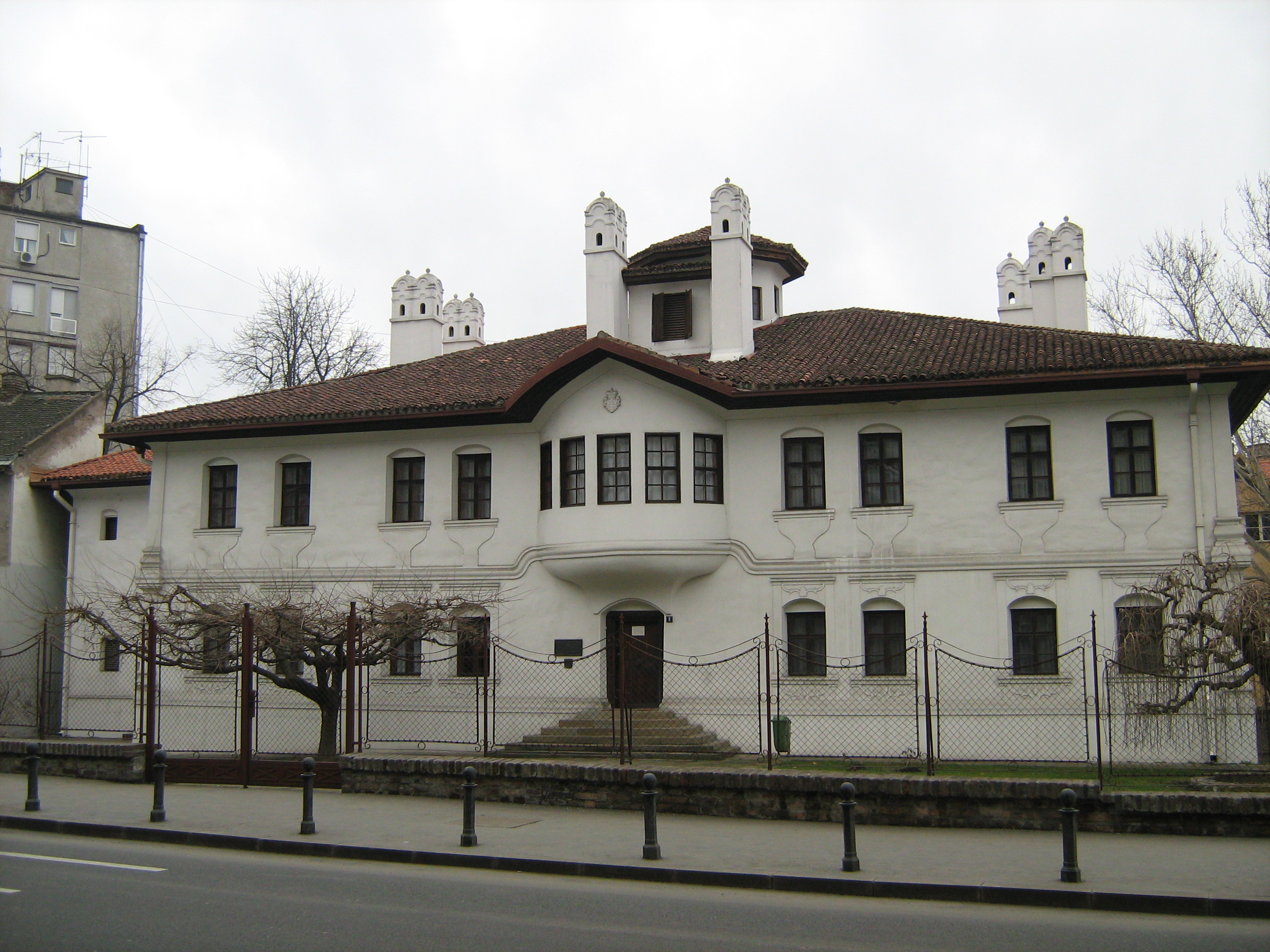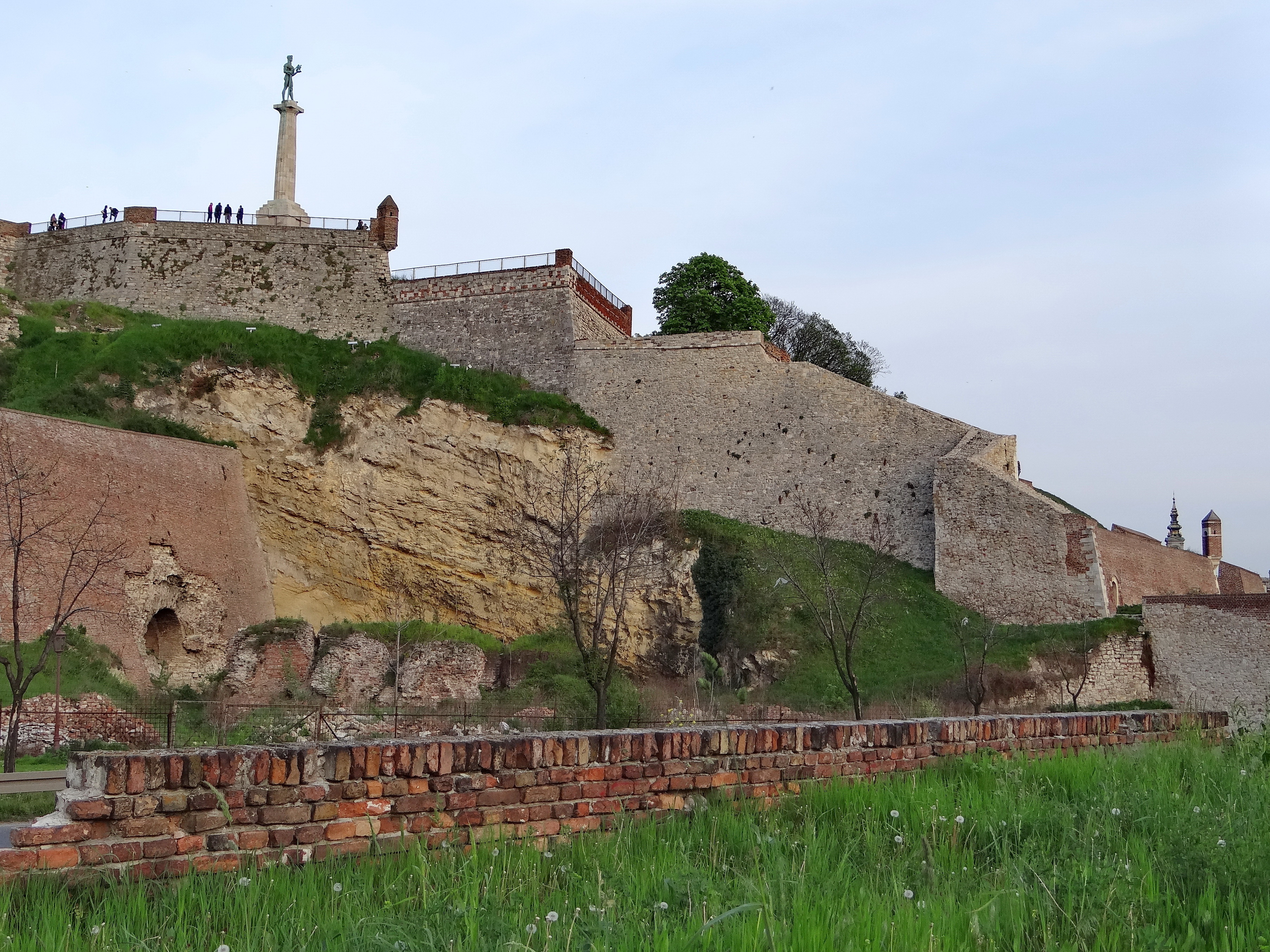|
Miloš Obrenović's House
Milošev Konak () is the residence of Serbian Prince Miloš Obrenović, which is located in Gornja Crnuća in the municipality of Gornji Milanovac, Serbia, and is one of the Monument of Culture of Exceptional Importance for Serbia, added in 2000. Gornja Crnuća can be considered first, but the temporary capital of Serbia since the prince Miloš Obrenović ruled Serbia for two years from that house. This house is of extreme importance because in it decision was made on raising the Second Serbian Uprising. Permanent exhibition in the house contains copies of documents, photographs and reproductions of several original artifacts related to the insurrectionist period. One of the dormitory has preserved the authentic atmosphere, a fireplace with a part of furniture and built in cocklestove furnace. See also * Monument of Culture of Exceptional Importance *Tourism in Serbia *House of Obrenović The House of Obrenović or Obrenović Dynasty (, Обрeновићи / Obrenovići, ) ... [...More Info...] [...Related Items...] OR: [Wikipedia] [Google] [Baidu] |
Gornja Crnuća
Gornja Crnuća ( sr-cyr, Горња Црнућа ) is a village located in Gornji Milanovac municipality of Serbia. In the 2002 census, it had 239 residents. There are several points of significance in the village. It is best known for the house of Miloš Obrenović in which the Second Serbian Uprising started. In fact, the village was the capital of what was then Principality of Serbia, from 1815 until 1818. The house was the official residence of the Sovereign, the Vraćevšnica Monastery which is one of the more significant Serbian monasteries. There also is a well-stocked hunting range and a scenic hiking path. The village was deemed an Ecological Village within the Ecological Municipality of Gornji Milanovac. Notable people * Mija Aleksić Milosav "Mija" Aleksić ( sr-cyr, Милосав "Мија" Алексић; 26 September 1923 – 12 March 1995) was a Serbian actor. Early life Aleksić was born in the Gornja Crnuća village within the municipality of Gornji Milanova ... [...More Info...] [...Related Items...] OR: [Wikipedia] [Google] [Baidu] |
Serbia
, image_flag = Flag of Serbia.svg , national_motto = , image_coat = Coat of arms of Serbia.svg , national_anthem = () , image_map = , map_caption = Location of Serbia (green) and the claimed but uncontrolled territory of Kosovo (light green) in Europe (dark grey) , image_map2 = , capital = Belgrade , coordinates = , largest_city = capital , official_languages = Serbian language, Serbian , ethnic_groups = , ethnic_groups_year = 2022 , religion = , religion_year = 2022 , demonym = Serbs, Serbian , government_type = Unitary parliamentary republic , leader_title1 = President of Serbia, President , leader_name1 = Aleksandar Vučić , leader_title2 = Prime Minister of Serbia, Prime Minister , leader_name2 = Đuro Macut , leader_title3 = Pres ... [...More Info...] [...Related Items...] OR: [Wikipedia] [Google] [Baidu] |
Cultural Monuments Of Exceptional Importance
Immovable Cultural Heritage of Exceptional Importance (/) are those objects of Immovable Cultural Heritage of Serbia, cultural heritage that enjoy the highest level of state protection in the Republic of Serbia. Immovable Cultural Heritage is classified as being of Exceptional Importance upon decision by the National Assembly of Serbia. They are inscribed in the ''Central Register of Immovable cultural property'' maintained by the . Objects of Immovable cultural heritage have to fulfill one or more of those criteria defined in the ''Law on Cultural Heritage'' of 1994 in order to be categorized as being "of exceptional importance": # exceptional importance for social, historical or cultural development of the people, or for the development of its natural environment; # evidence of important historic events or persons and their work; # unique (rare) example of human creativity of the time or a unique example from the natural history; # great influence on the development of society, cul ... [...More Info...] [...Related Items...] OR: [Wikipedia] [Google] [Baidu] |
Miloš Obrenović I Of Serbia
Miloš, Milos, Miłosz or spelling variations thereof is a mainly male Slavic given name and a surname. It may refer to: Given name Sportsmen * Miłosz Bernatajtys, Polish rower * Miloš Bogunović, Serbian footballer * Miloš Budaković, Serbian footballer * Miloš Ćuk, Serbian water polo player, Olympic champion * Miloš Dimitrijević, Serbian footballer * Miloš Đelmaš, Serbian footballer * Miloš Holuša, Czech race walker * Miloš Jojić, Serbian footballer * Miloš Korolija, Serbian water polo player * Miloš Krasić, Serbian footballer * Miloš Marić, Serbian footballer * Miloš Milošević, Croatian swimmer * Miloš Milutinović, Serbian footballer and manager * Miloš Nikić, Serbian volleyball player * Miloš Ninković, Serbian footballer * Miloš Pavlović (racing driver), Serbian racing driver * Milos Raonic, Montenegrin-born Canadian tennis player * Miloš Stanojević (rower), Serbian rower * Miloš Šestić, Serbian footballer * Miloš Teodos ... [...More Info...] [...Related Items...] OR: [Wikipedia] [Google] [Baidu] |
Gornji Milanovac
Gornji Milanovac ( sr-Cyrl, Гoрњи Милановац, ) is a town and municipality located in the Moravica District of central Serbia. The population of the town is 23,109, while the population of the municipality is 38,985 (2022 census data). The town was founded in 1853. Before 1859 the original name of the town was Despotovica ( sr-Cyrl, Деспотовица), after the Despotovica river passing by the town. In 1859 the name was changed to Gornji Milanovac at the request of the Prince of Serbia Miloš Obrenović. Its name means ''Upper Milanovac'' (there is a Donji Milanovac, Lower Milanovac as well, while Milanovac stems from the name Milan (given name), Milan in Serbian language, Serbian). History Initially, the settlement that was to become Gornji Milanovac (before 1853) was situated in the area of today's village Brusnica, Gornji Milanovac, Brusnica. There was some discussion about the suitability of the site for a settlement. The new municipality was to be called Desp ... [...More Info...] [...Related Items...] OR: [Wikipedia] [Google] [Baidu] |
Monuments Of Culture Of Exceptional Importance (Serbia)
A monument is a type of structure that was explicitly created to commemorate a person or event, or which has become relevant to a social group as a part of their remembrance of historic times or cultural heritage, due to its artistic, historical, political, technical or architectural importance. Examples of monuments include statues, (war) memorials, historical buildings, archaeological sites, and cultural assets. If there is a public interest in its preservation, a monument can for example be listed as a UNESCO World Heritage Site. The '' Palgrave Encyclopedia of Cultural Heritage and Conflict'' gives the next definition of monument:Monuments result from social practices of construction or conservation of material artifacts through which the ideology of their promoters is manifested. The concept of the modern monument emerged with the development of capital and the nation-state in the fifteenth century when the ruling classes began to build and conserve what were termed monument ... [...More Info...] [...Related Items...] OR: [Wikipedia] [Google] [Baidu] |
Second Serbian Uprising
The Second Serbian Uprising ( / ''Drugi srpski ustanak'', ) was the second phase of the Serbian Revolution against the Ottoman Empire, which erupted shortly after the re-annexation of the country to the Ottoman Empire in 1813. The occupation was enforced following the defeat of the First Serbian Uprising (1804–1813), during which Serbia existed as a '' de facto'' independent state for over a decade. The second revolution ultimately resulted in Serbian semi-independence from the Ottoman Empire. The Principality of Serbia was established, governed by its own parliament, constitution and royal dynasty. ''De jure'' independence, however, was attained in 1878, following the decisions of the Congress of Berlin. Background The First Serbian Uprising liberated the country for a significant time (1804–1813) from the Ottoman Empire; for the first time in three centuries, Serbs governed themselves without the supremacy of the Ottoman Empire or Habsburg Austria. After the failure of th ... [...More Info...] [...Related Items...] OR: [Wikipedia] [Google] [Baidu] |
Cocklestove
A masonry heater (also called a masonry stove) is a device for warming an interior space through radiant heating, by capturing the heat from periodic burning of fuel (usually wood), and then radiating the heat at a fairly constant temperature for a long period. Masonry heaters covered in tile are called Kachelofen (also tile stoves or ceramic stoves). The technology has existed in different forms, from back into the Neoglacial and Neolithic periods. Archaeological digs have revealed excavations of ancient inhabitants utilizing hot smoke from fires in their subterranean dwellings, to radiate into the living spaces. These early forms eventually evolved into modern systems. Evidence found from 5,000 BC of massive blocks of masonry used to retain heat foreshadowed Underfloor heating#History/, early forms of fire hearths that were used as multifunctional heating sources. Later evolutions came in the Roman ''hypocaust'', Chinese Kang bed-stove, kang, Korean ondol and Spanish Gloria (h ... [...More Info...] [...Related Items...] OR: [Wikipedia] [Google] [Baidu] |
Tourism In Serbia
Tourism in Serbia is officially recognized as a primary area for economic and social growth. The hotel and catering sector accounted for approximately 2.2% of GDP in 2015. Tourism in Serbia employs some 120 000 people, about 4.5% of the country's workforce. In recent years the number of tourists is increasing. In 2019, tourism generated an income of nearly $1.698 billion, hosting 1.85 million tourists. Chinese tourists were the most numerous visitors, followed by tourists from Bosnia and Herzegovina, Bulgaria, Turkey, and Germany. In 2022, tourism earnings surged to $2.71 billion and almost 2 million tourists visited the country. Major destinations for foreign tourists are Belgrade, Novi Sad and Niš, while domestic tourists prefer spas and mountain resorts. Eco-friendly and sustainable tourism has also become very popular among domestic tourists, with many visiting various nature reserves and parks in the western and southern part of the country. Serbia is also known for gastr ... [...More Info...] [...Related Items...] OR: [Wikipedia] [Google] [Baidu] |
Cultural Monuments Of Exceptional Importance (Serbia)
Immovable Cultural Heritage of Exceptional Importance (/) are those objects of Immovable Cultural Heritage of Serbia, cultural heritage that enjoy the highest level of state protection in the Republic of Serbia. Immovable Cultural Heritage is classified as being of Exceptional Importance upon decision by the National Assembly of Serbia. They are inscribed in the ''Central Register of Immovable cultural property'' maintained by the . Objects of Immovable cultural heritage have to fulfill one or more of those criteria defined in the ''Law on Cultural Heritage'' of 1994 in order to be categorized as being "of exceptional importance": # exceptional importance for social, historical or cultural development of the people, or for the development of its natural environment; # evidence of important historic events or persons and their work; # unique (rare) example of human creativity of the time or a unique example from the natural history; # great influence on the development of society, cul ... [...More Info...] [...Related Items...] OR: [Wikipedia] [Google] [Baidu] |
Architecture In Serbia
The architecture of Serbia has a long, rich and diverse history. Some of the major European style from Roman to Postmodern are demonstrated, including renowned examples of Raška, Serbo-Byzantine with its revival, Morava, Baroque, Classical and Modern architecture, with prime examples in Brutalism and Streamline Moderne. Centuries of turbulent history of Serbia caused a great regional diversity and favored vernacular architecture. This made for a heterogeneous and diverse architectural style, with architecture differing from town to town. While this diversity may still be witnessed in small towns, the devastation of architectural heritage in the larger cities during World War II, and subsequent socialist influence on architecture resulted in specific mix of architectural styles. Prehistoric period Numerous civilizations and cultures resided on the territory of Serbia prior to the arrival of the Romans. Best known ones were Starčevo, Iron Gates and Vinča cultures, dating ... [...More Info...] [...Related Items...] OR: [Wikipedia] [Google] [Baidu] |






